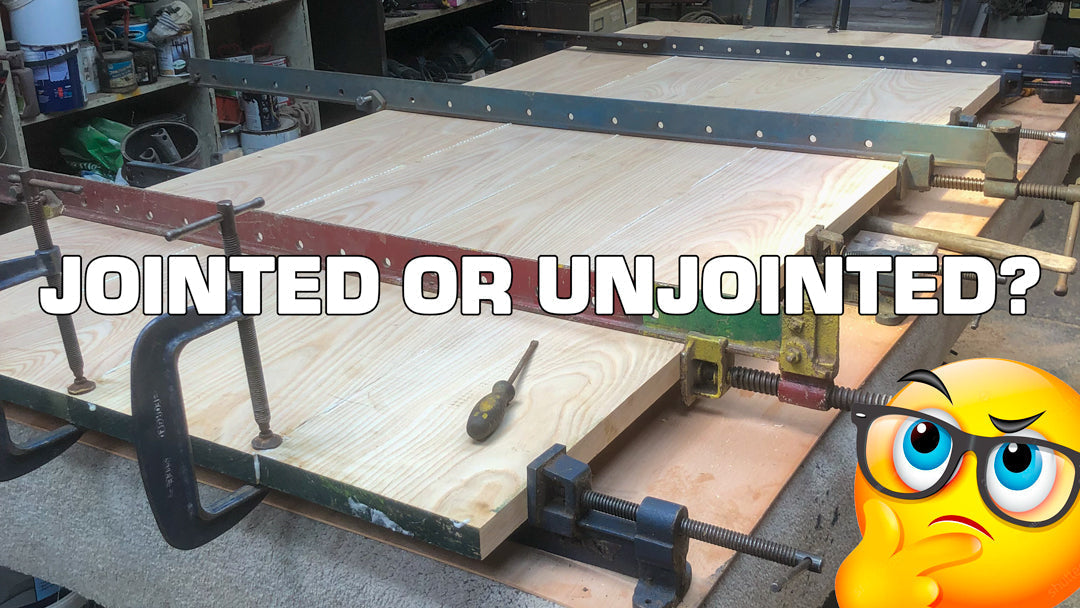
Jointed Vs Unjointed Rustic Industrial Tables
There is often some confusion or misunderstanding about the differences between a jointed rustic table and an unjointed rustic table. Which is why we at Chunk Monkey have made a little guide to help you understand the differences between the two and how it can be a benefit for your table.
What is a jointed table?
Chunk Monkey makes our jointed rustic tables by planing the individual boards to ensure they are straight and square. These boards are then joined using biscuit joints and glued together to form a solid slab of wood, which serves as the tabletop. This traditional process enhances the tables strength and durability.
We do offer this service on our rustic industrial coffee tables and dining tables, but this service costs more due to the extra time and labour involved in making the final product. If you would like to have a look at our jointing service, please click here.
What is an unjointed table?
Tables can also be made by holding the individual planed and squared boards together. To achieve this, you screw the boards tightly together with the table legs and fixings. At Chunk Monkey, this is the method that we choose to use as standard for several money saving reasons that we pass onto you, the customers.
This method lowers the cost of labour and reduces the amount of time that it takes to create our final product. It also helps to lower the cost on delivery and makes it easier to deliver.
These are key factors that help make our handmade rustic industrial furniture affordable and with the lifetime guarantee that we have on all our products, you can rest assured that your purchase will be made to the highest quality.
Another benefit of purchasing the unjointed tables is that it can ease potential accessibility issues to properties with narrow spaces or tight corners. It makes it easier for you to bring the individual boards and legs into their desired room for assembly.
Over time, the wood will acclimatise to its new surroundings in your home and may slightly shrink or expand (depending on the relative humidity of its new environment). With individual boards, the top can be adjusted to remove any gaps in the rustic tabletop that may develop.
Summary
There are benefits for both jointed tables and unjointed tables. Jointed tables do add that extra strength and will remove the possible need to adjust the timber over time. Alternatively, they are not as easy to adjust and come at an extra cost. Unjointed boards offer more accessibility and reduces the cost of your new coffee or dining table. Ultimately, it’s up to you! Take a look at our selection of unjointed rustic industrial dining tables by clicking the image below.

